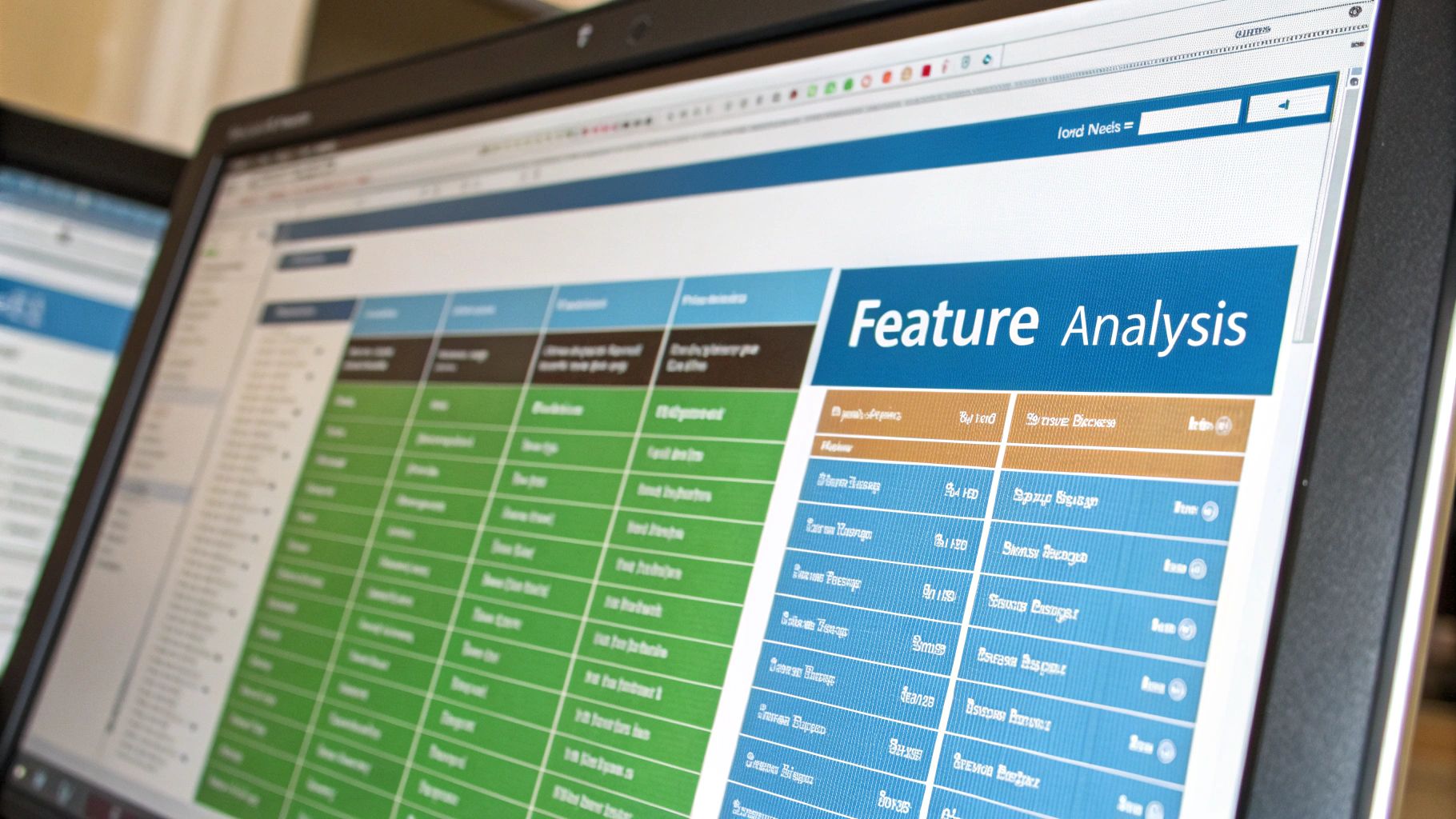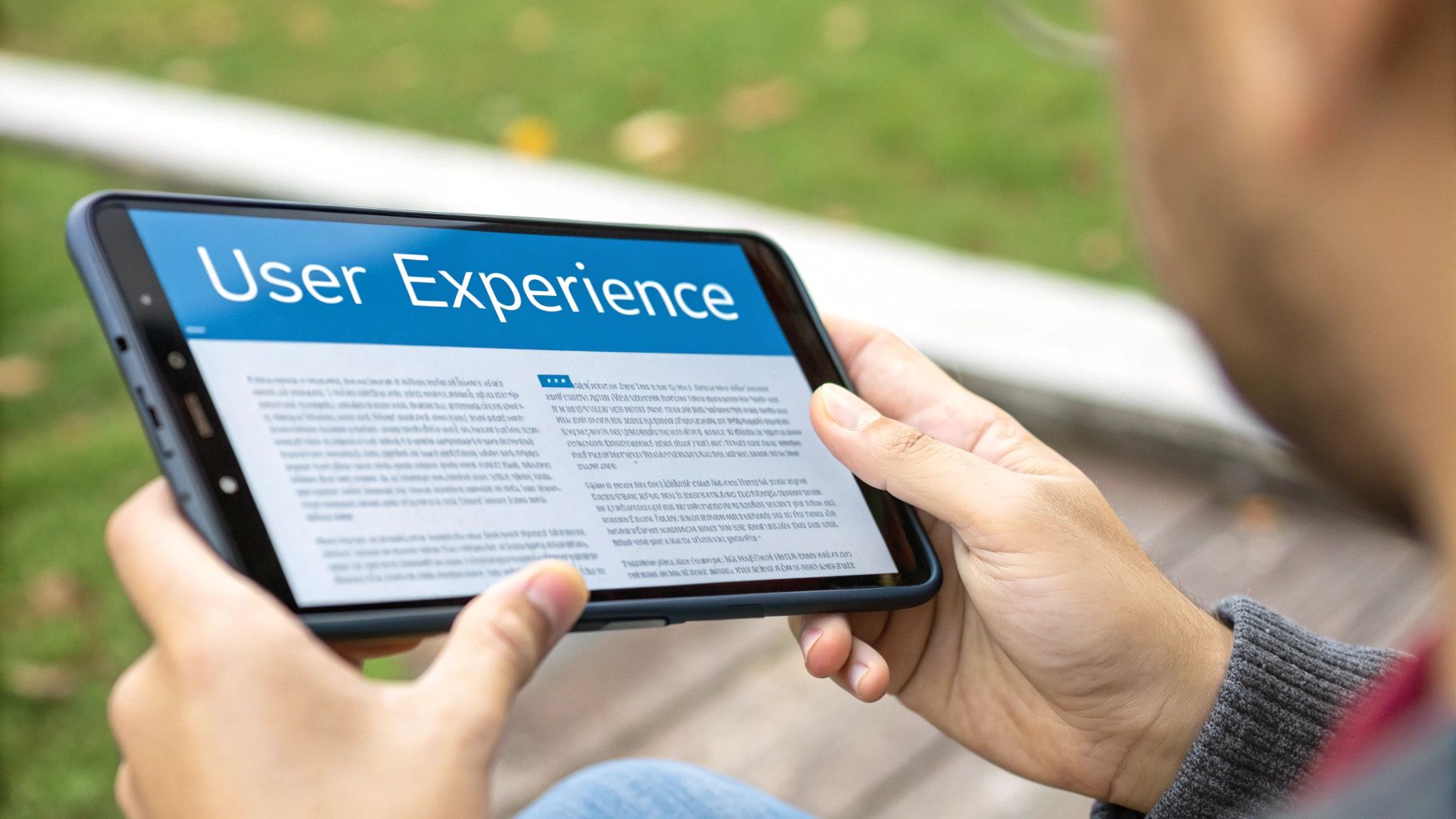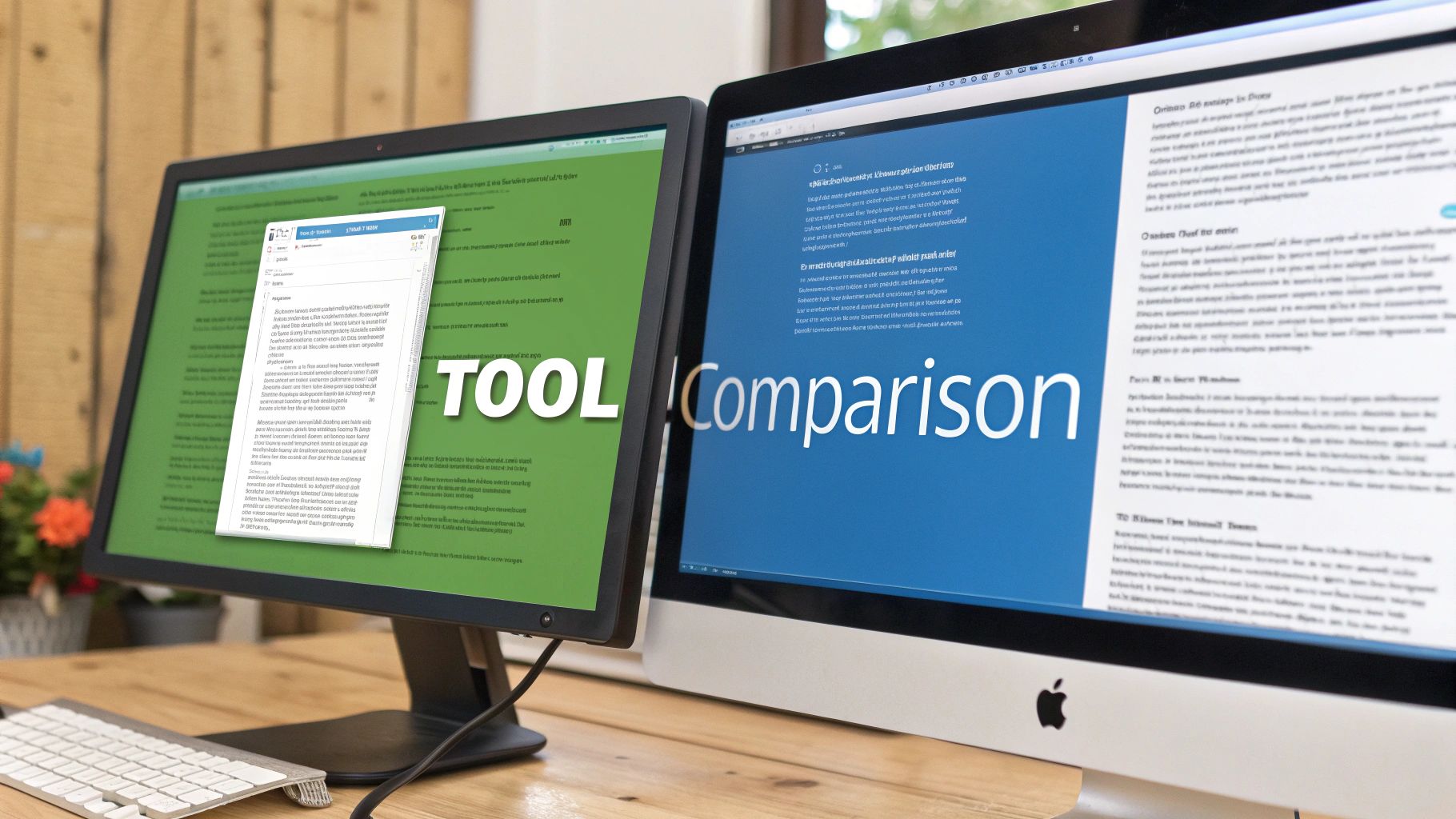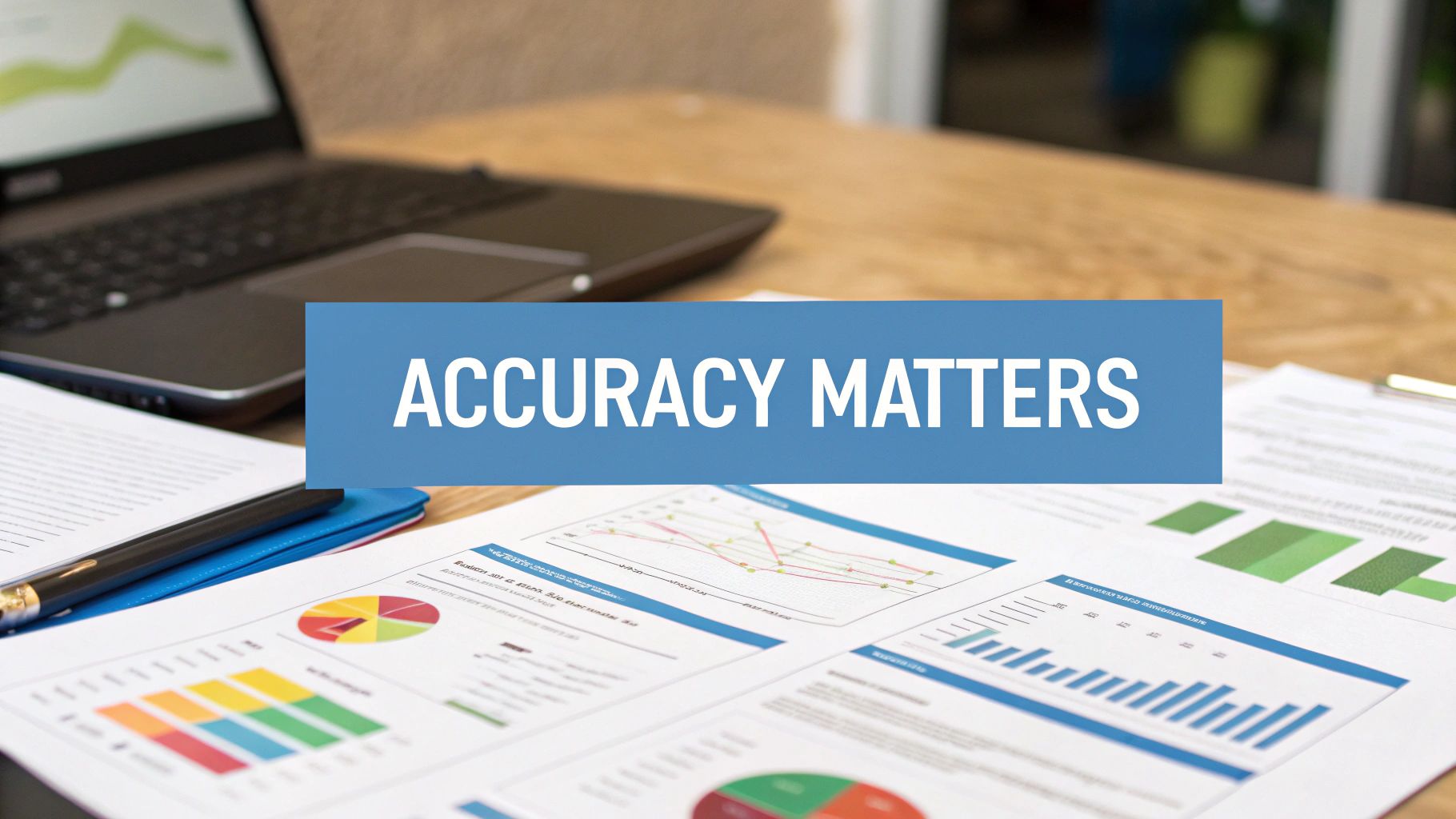Understanding What Makes a Great Plagiarism Checker

Choosing the right plagiarism checker requires looking past flashy marketing claims about database size and accuracy rates. To make an informed decision, you need to understand what actually matters in plagiarism detection. This guide will help you evaluate different tools based on their real capabilities rather than just impressive-sounding numbers. For additional guidance on content verification, you may want to explore resources like the SmartStudi Content Checker.
Database Size vs. Database Composition
While many plagiarism checkers promote their huge databases with billions of pages, raw size isn't everything. For example, a smaller database focused on academic sources can often detect plagiarism more effectively than a larger one filled mostly with general web content. The key is having the right mix of sources that match your specific needs, whether that's scholarly articles for academic work or web content for general writing.
The Role of Detection Algorithms
At their core, plagiarism checkers use specialized algorithms to find matching text between documents. These tools employ various methods like string matching, fingerprinting, and vector space analysis to spot potential plagiarism. Some advanced systems can even catch reworded content where the original text has been paraphrased. The specific type of algorithm used directly affects what kinds of plagiarism a tool can and cannot detect effectively.
Accuracy Rates: What to Look For
When evaluating accuracy claims, context is crucial. For instance, Scribbr reports an 83% accuracy rate, which stands well above the typical 42% for free tools and 47% for paid options. However, these numbers need careful examination – a tool might excel at finding exact copies but miss subtler forms of plagiarism. Understanding how accuracy rates are measured helps reveal their true meaning.
Real-World Examples: Successes and Failures
The true test of a plagiarism checker comes from its performance in actual use. Looking at concrete examples where tools either caught heavily modified plagiarized content or missed obvious copying from obscure sources tells you more than any marketing materials. These real cases demonstrate where tools shine and where they fall short.
Beyond the Basics: Additional Features
While strong plagiarism detection is essential, useful extra features can improve the overall value of a tool. Options like citation checking, grammar correction, and writing style analysis can be genuinely helpful additions. However, it's important to focus on features that serve your needs rather than getting distracted by unnecessary extras. The best choice combines reliable plagiarism detection with practical supporting features that match your specific requirements.
Breaking Down Database Coverage That Actually Matters

When evaluating plagiarism checkers, looking beyond simple claims about database size is essential. The real value comes from having relevant, high-quality sources that match your specific needs. For instance, a tool may boast billions of indexed pages, but if those pages don't include academic content, it won't serve students and researchers effectively.
Why Database Composition Matters More Than Sheer Size
Think about a graduate student working on their thesis in a specialized scientific field. They need a plagiarism checker that can access scholarly articles and research papers related to their topic. A massive database filled with blog posts and general web content, while impressive in numbers, offers limited value for academic work since students primarily reference scholarly sources.
The source types in the database directly affect how well the checker performs its job. A tool that only indexes freely available online content might miss potential matches from subscription-based academic journals and private databases. This highlights why considering database diversity is crucial when choosing between different plagiarism checkers.
How Different Databases Are Built and Maintained
Plagiarism checking services take different approaches to building their content repositories. Scribbr, for example, casts a wide net by indexing content from across the web to offer broad coverage. Other services focus specifically on academic sources, creating specialized tools for students and researchers.
Some plagiarism checkers form partnerships with academic publishers, giving them direct access to current research papers and scholarly works. This focused approach improves accuracy for academic writing but might make the tool less suitable for checking marketing content or blog posts. Each approach has its strengths depending on the intended use case.
The Impact of Database Updates on Accuracy
Keeping databases current is just as important as their initial composition. An outdated database becomes less effective over time as new content is published online and in academic journals. Regular updates help plagiarism checkers stay relevant and accurate, making update frequency an important factor when comparing different tools.
This means a smaller database that's frequently refreshed can often detect plagiarism more effectively than a larger but static one. It's similar to comparing libraries – a modest collection of current materials typically proves more useful than an extensive but outdated one. When choosing a plagiarism checker, look for services that consistently update their databases to include recent sources.
Making Sense of Complex Pricing Models

Choosing the right plagiarism checker means understanding the different pricing options available. From free tools to paid subscriptions and one-time purchases, each model comes with its own set of features and limitations. Let's examine these options in detail to help you make an informed choice that fits your needs.
Free vs. Paid: Understanding the Trade-Offs
Free plagiarism checkers provide basic functionality but often come with significant limitations. Most free tools restrict word counts to around 500 words and only show basic similarity scores without detailed reports. Paid options, in contrast, give you access to larger databases, better detection algorithms, and extra features like citation checking. Think of it like basic transportation versus premium travel – both get you there, but the experience differs greatly. Before investing in a paid tool, consider your specific requirements. You may find helpful guidance in How to master….
Decoding Subscription Models
Most plagiarism detection services use tiered subscription plans with different service levels. The main differences between tiers typically include monthly word limits, feature access, and support options. A basic plan might allow 10,000 words monthly, while premium subscriptions often offer unlimited checks. Higher tiers can include extras like API access or priority support. The key is matching the subscription level to your expected usage – there's no point paying for features you won't use.
One-Time Purchases: When They Make Sense
Some services offer lifetime access through one-time purchases, which can work well for specific situations. For example, a graduate student writing a thesis might save money with a one-time purchase rather than an ongoing subscription. However, consider long-term factors like software updates and database maintenance. Will the tool stay current with new operating systems? Does the purchase include future database updates? These questions matter when evaluating one-time purchase options.
Mixing and Matching for Maximum Value
Getting the best value often means using different tools strategically. You might use a free checker for early drafts and save a premium service for final reviews. Many universities provide premium checker access to students and faculty, which can supplement personal tools. By thoughtfully combining different options based on your needs, you can maximize value without overspending. The best approach comes from carefully analyzing your requirements and exploring various combinations of available tools.
Advanced Features That Actually Improve Your Work

Modern plagiarism checkers offer more than just similarity detection – they include helpful features that can improve your writing process. Rather than focusing on flashy marketing features, it's important to identify which capabilities actually help produce better work. The key is finding tools that fit naturally into how you write and make meaningful contributions to your final output.
Citation Assistance: More Than Just Formatting
Getting citations right is essential for academic integrity. The best plagiarism checkers now include smart citation tools that go beyond basic formatting. They can automatically generate citations in MLA, APA, Chicago and other styles by analyzing your sources. This saves significant time while helping ensure accurate citations – a crucial requirement for academic writing.
Writing Style Enhancements: Refining Your Prose
Many tools now include features to help improve your writing quality. They can check grammar, suggest stronger word choices, and point out areas where sentence structure could be clearer. While these features shouldn't replace your own writing skills, they provide useful feedback that can help polish your work. For more writing tips, see our guide on How to master….
Paraphrasing Assistance: Balancing Help and Risk
While paraphrasing is a legitimate writing technique, it needs to be done properly to avoid plagiarism. Some checkers provide suggestions for rewording text while keeping the original meaning. However, be careful not to rely too heavily on automated paraphrasing. Focus on understanding the source material and expressing ideas in your own authentic voice.
Integrating Advanced Features Into Your Workflow
To get the most from advanced features, incorporate them thoughtfully into how you write. Choose tools that address your specific needs rather than trying to use every available feature. For example, if citations are challenging, prioritize a tool with strong citation capabilities. Remember that these features should support, not replace, your own writing and editing abilities.
| Feature | Benefit | Potential Pitfall |
|---|---|---|
| Citation Generator | Automates citation formatting, saves time | Over-reliance, potential inaccuracies |
| Style Enhancement | Improves clarity and grammar | Can stifle creativity if overused |
| Paraphrasing Help | Assists with rewording complex concepts | Risk of unintentional plagiarism |
By carefully selecting and using advanced features, you can turn a plagiarism checker into a valuable writing assistant. Focus on tools that genuinely help you write better, more original content. The goal isn't just avoiding plagiarism – it's developing stronger writing skills through thoughtful use of helpful technology.
Navigating Tool Selection for Different Needs
Choosing the right plagiarism checker starts with understanding how different tools match specific needs and use cases. The ideal solution varies significantly based on your role and requirements – what works perfectly for a student may not serve a content professional's needs.
Defining User Needs: From Student to Professional
Students typically prioritize affordability and ease of use in plagiarism checkers. Many rely on free tools or school-provided options to check their assignments while staying within budget. Features like citation help and grammar checking are especially useful for academic writing. For example, SmartStudi combines AI detection with citation tools specifically for student needs.
Academic researchers need extensive coverage of scholarly content. Their work requires checking against journals, conference papers, and dissertations to maintain academic integrity. Detailed reporting helps them identify potential issues and properly credit sources in their work.
Professional content creators focus on different priorities. They need tools that integrate smoothly with their workflow and process content quickly. Features like bulk checking and API access help them efficiently verify originality for web content and marketing materials at scale.
Tailoring Tool Selection: A Practical Approach
Finding the right plagiarism checker requires matching your specific needs to available options. There's no universal solution – the best choice depends on your particular situation.
For instance, a student writing occasional essays might do fine with a free tool that has word count limits. But a PhD candidate needs premium access to academic databases. Content agencies often benefit most from subscription services with API integration for automated checking. These varying requirements highlight why tool selection matters.
Real-World Examples: Finding the Right Fit
Consider how a typical student might combine tools – using a free checker for early drafts, then their university's official system for final submission. This approach balances cost with thorough verification.
A freelance writer, on the other hand, might invest in a premium service with advanced features like style analysis and grammar checking. This comprehensive tool helps them deliver polished, original work that builds their professional reputation.
Making Your Decision: A Framework for Success
Use these key points to guide your plagiarism checker selection:
- Define your primary use case: Are you a student, researcher, or content professional?
- Determine your budget: Are you looking for free options, a one-time purchase, or an ongoing subscription?
- Prioritize essential features: Do you need citation generation, grammar checking, or API access?
- Evaluate database coverage: Does the tool check sources relevant to your field?
By carefully considering these factors, you can select a plagiarism checker that truly fits your needs and helps you produce authentic, high-quality work efficiently.
Future-Proofing Your Plagiarism Detection Strategy
As content creators and educators face new challenges in maintaining academic integrity, having an effective plagiarism detection approach is more important than ever. Simply choosing a plagiarism checker isn't enough – you need a comprehensive strategy that can adapt and grow with changing technologies and evolving plagiarism tactics.
The Rise of AI and Its Impact on Plagiarism Detection
The technology behind plagiarism detection has made significant progress, particularly with artificial intelligence. While older tools relied on basic text matching, modern AI-powered solutions can analyze content semantically to identify paraphrased text and even translated plagiarism. This represents major progress in catching sophisticated forms of academic dishonesty. However, as detection methods improve, those attempting to cheat are also developing new techniques to avoid detection. This ongoing evolution highlights why staying current with AI advances in plagiarism detection matters.
Emerging Trends and Features to Watch
Several key developments are shaping how plagiarism detection tools work. One major trend is the integration of plagiarism checking directly into writing platforms and workflows. This allows users to scan content for potential issues while writing, making the process more efficient. For example, some solutions now combine grammar checking, citation tools, and plagiarism detection in one place. Cross-language plagiarism detection is also becoming essential as content sharing spans more borders. Tools that can identify copied content across different languages will be increasingly valuable.
Building a Flexible and Adaptable Approach
Creating an effective long-term strategy starts with understanding your specific needs. A student requires different features than a content agency or academic researcher. For instance, students often need affordable options with citation help, while marketing teams may want API access to check content in bulk. Your approach should match your particular use case.
Regular evaluation of your current tools is also important. Just as you update software for security, staying current with plagiarism detection advances helps maintain content integrity. Comparing different solutions can reveal which ones best fit your evolving requirements.
Evaluating New Tools and Features: A Practical Guide
When assessing plagiarism detection tools, look beyond basic functionality. Focus on providers that consistently update their databases and algorithms to address new plagiarism techniques. Check if they actively incorporate user feedback into product improvements. These signs indicate a forward-thinking approach that will serve you well over time.
Avoid getting caught up in marketing claims – instead examine practical features that solve your specific challenges. Consider factors like workflow integration, reporting capabilities, and available support. Taking a thoughtful, informed approach to tool selection helps build a robust strategy for maintaining content originality.
Ready to experience effective plagiarism detection? Try SmartStudi today, with AI-powered tools designed for students and content creators. Visit https://smartstudi.com to explore our suite of AI tools, including plagiarism detection, paraphrasing assistance, and citation generation.
